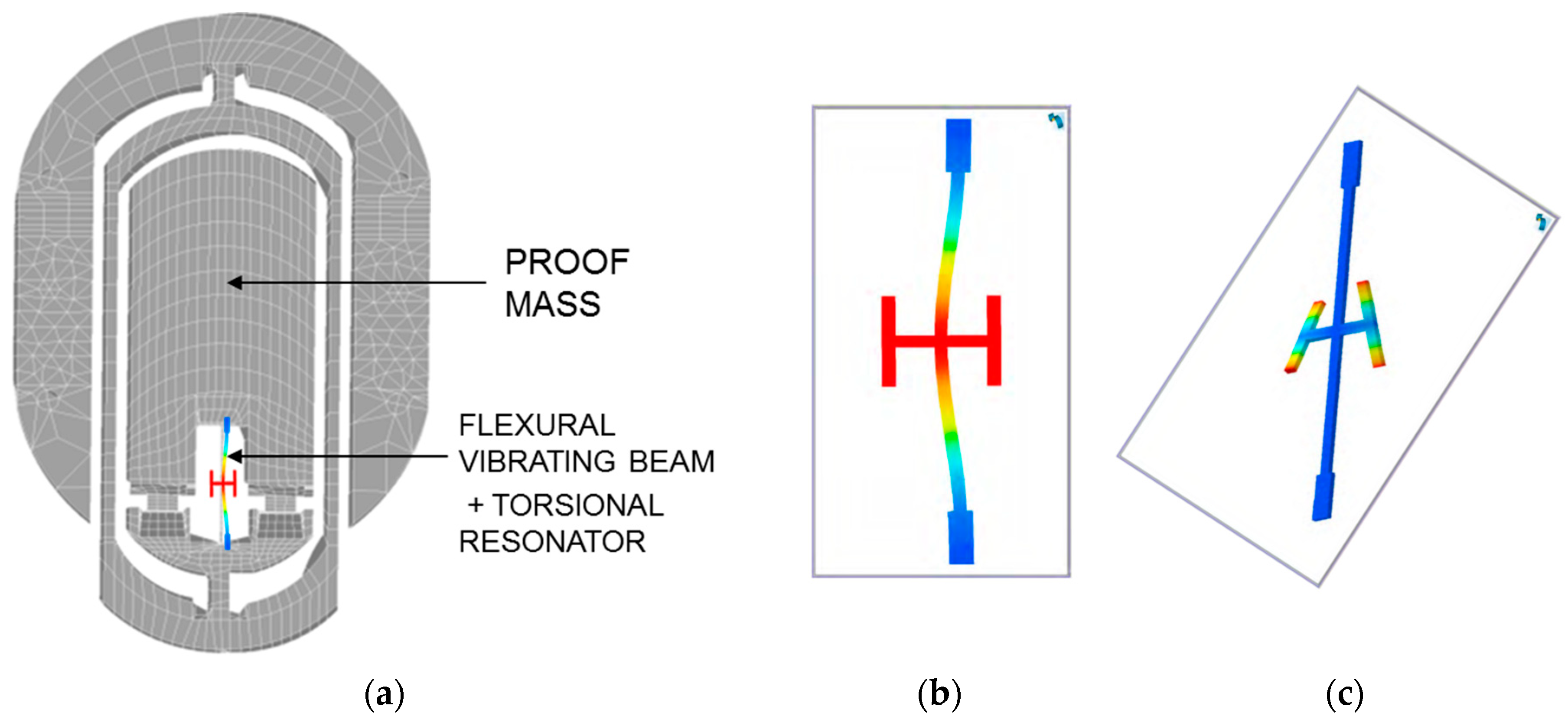High Precision Accelerometer with Integrated Thermal Sensor †
Abstract
:1. Introduction
1.1. Inertial Grade MEMS Accelerometer for Emerging Applications
1.2. Bias Drift over Temperature
2. MEMS Detailed Design
Torsional Mode Design
3. Results
Thermal Transient Behavior
4. Conclusions
References
- Lynch, J.P.; Loh, K.J. A summary review of wireless sensors and sensor networks for structural health monitoring. Shock Vib. Dig. 2006, 38, 91–130. [Google Scholar] [CrossRef]
- Ha, D.W.; Park, H.S.; Choi, S.W.; Kim, Y. A wireless MEMS-based inclinometer sensor node for structural health monitoring. Sensors 2013, 13, 16090–16104. [Google Scholar] [CrossRef] [PubMed]
- Huang, J.; Zhou, Q.; Zhang, X.; Song, E.; Li, B.; Yuan, X. Seismic target classification using a wavelet packet manifold in unattended ground sensors systems. Sensors 2013, 13, 8534–8550. [Google Scholar] [CrossRef] [PubMed]
- Mehmood, A.; Patel, V.M.; Damarla, T. Discrimination of bipeds from quadrupeds using seismic footstep signatures. In Proceedings of the 2012 IEEE International Geoscience and Remote Sensing Symposium (IGARSS), Munich, Germany, 22–27 July 2012. [Google Scholar]
- Loret, T.; Hardy, G.; Vallée, C.; Demutrecy, V.; Kerrien, T.; Cochain, S.; Blondeau, R. Navigation grade accelerometer with quartz vibrating beam. In Proceedings of the 2014 IEEE DGON Inertial Sensors and Systems Symposium (ISS), Karlsruhe, Germany, 16–17 September 2014. [Google Scholar]
- Levy, R.; Janiaud, D.; Guerard, J.; Taibi, R.; Le Traon, O. A 50 nano-g resolution quartz Vibrating Beam Accelerometer. In Proceedings of the International Symposium on Inertial Sensors and Systems (ISISS), Laguna Beach, CA, USA, 25–26 February 2014. [Google Scholar]
- Levy, R.; Le Traon, O.; Masson, S.; Ducloux, O.; Janiaud, D.; Guerard, J.; Chartier, C. An integrated resonator-based thermal compensation for Vibrating Beam Accelerometers. In Proceedings of the 2012 IEEE Sensors, Taipei, Taiwan, 28–31 October 2012. [Google Scholar]





| Flexural Frequency (Hz) | Torsional Frequency (Hz) | Torsional Rm | Scale Factor | |
|---|---|---|---|---|
| Candidate A | 35,020 | 207,210 | 22 MΩ | 211 Hz/g |
| Candidate B | 34,970 | 737,850 | 5 MΩ | 247 Hz/g |
Publisher’s Note: MDPI stays neutral with regard to jurisdictional claims in published maps and institutional affiliations. |
© 2017 by the authors. Licensee MDPI, Basel, Switzerland. This article is an open access article distributed under the terms and conditions of the Creative Commons Attribution (CC BY) license (https://creativecommons.org/licenses/by/4.0/).
Share and Cite
Bourgeteau-Verlhac, B.; Lévy, R.; Lavenus, P.; Chartier, C.; Gaudineau, V.; Traon, O.L. High Precision Accelerometer with Integrated Thermal Sensor. Proceedings 2017, 1, 285. https://doi.org/10.3390/proceedings1040285
Bourgeteau-Verlhac B, Lévy R, Lavenus P, Chartier C, Gaudineau V, Traon OL. High Precision Accelerometer with Integrated Thermal Sensor. Proceedings. 2017; 1(4):285. https://doi.org/10.3390/proceedings1040285
Chicago/Turabian StyleBourgeteau-Verlhac, Beatrice, Raphaël Lévy, Pierre Lavenus, Claude Chartier, Vincent Gaudineau, and Olivier Le Traon. 2017. "High Precision Accelerometer with Integrated Thermal Sensor" Proceedings 1, no. 4: 285. https://doi.org/10.3390/proceedings1040285
APA StyleBourgeteau-Verlhac, B., Lévy, R., Lavenus, P., Chartier, C., Gaudineau, V., & Traon, O. L. (2017). High Precision Accelerometer with Integrated Thermal Sensor. Proceedings, 1(4), 285. https://doi.org/10.3390/proceedings1040285




